Are you looking for a non-invasive solution to fix an overbite? Perhaps, mewing will do the trick!
If you’re eager to implement this face-sculpting method from the comfort of your home, we’ll hook you up with all the details and help you avoid the most common mewing mistakes.
Take a quick quiz below and get:
✅Personalized mewing program that’ll help you get rid of overbite
✅Daily exercises
✅Guidance on how to reach your goals
✅Video guides, tips, daily reminders, etc.
In this article, you’ll learn:
- 📝 What an overbite is. Check out what qualifies as an overbite and whether you have one.
- 📝 What causes an overbite? Learn about the different factors that can cause and make an overbite worse.
- 📝 What mewing is and how it can help. Familiarize yourself with mewing and learn how it can affect an overbite.
- 📝Other overbite treatments. Explore other methods of treatment with us.
What Is an Overbite?
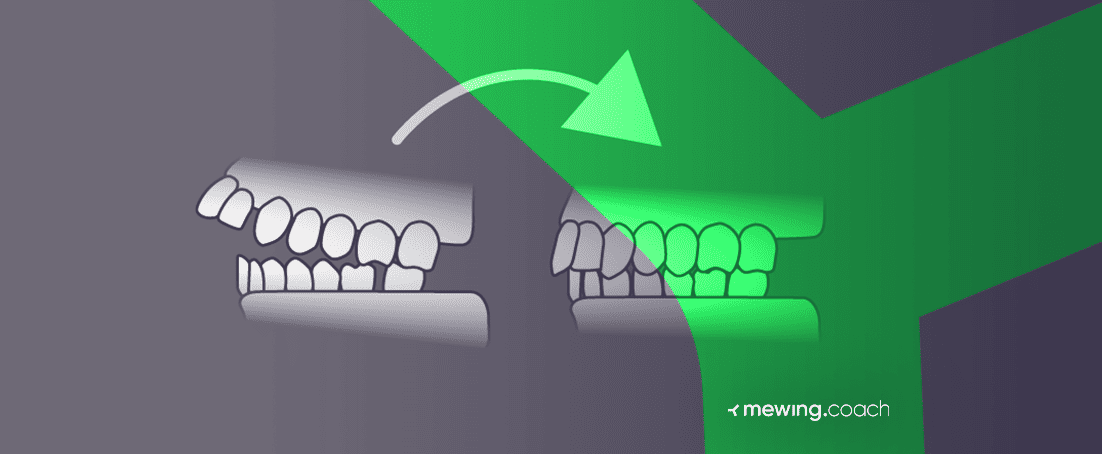
An overbite, or a class 2 division 1 malocclusion (as it is known in the dentistry world) is a condition of the jaws in which the upper jaw is significantly protruded over the lower jaw, creating that ‘overbite’ effect. Much like crossbites and underbites, it is an unnatural positioning of the jaw that can be fixed via mewing.
Overbite vs. Overjet
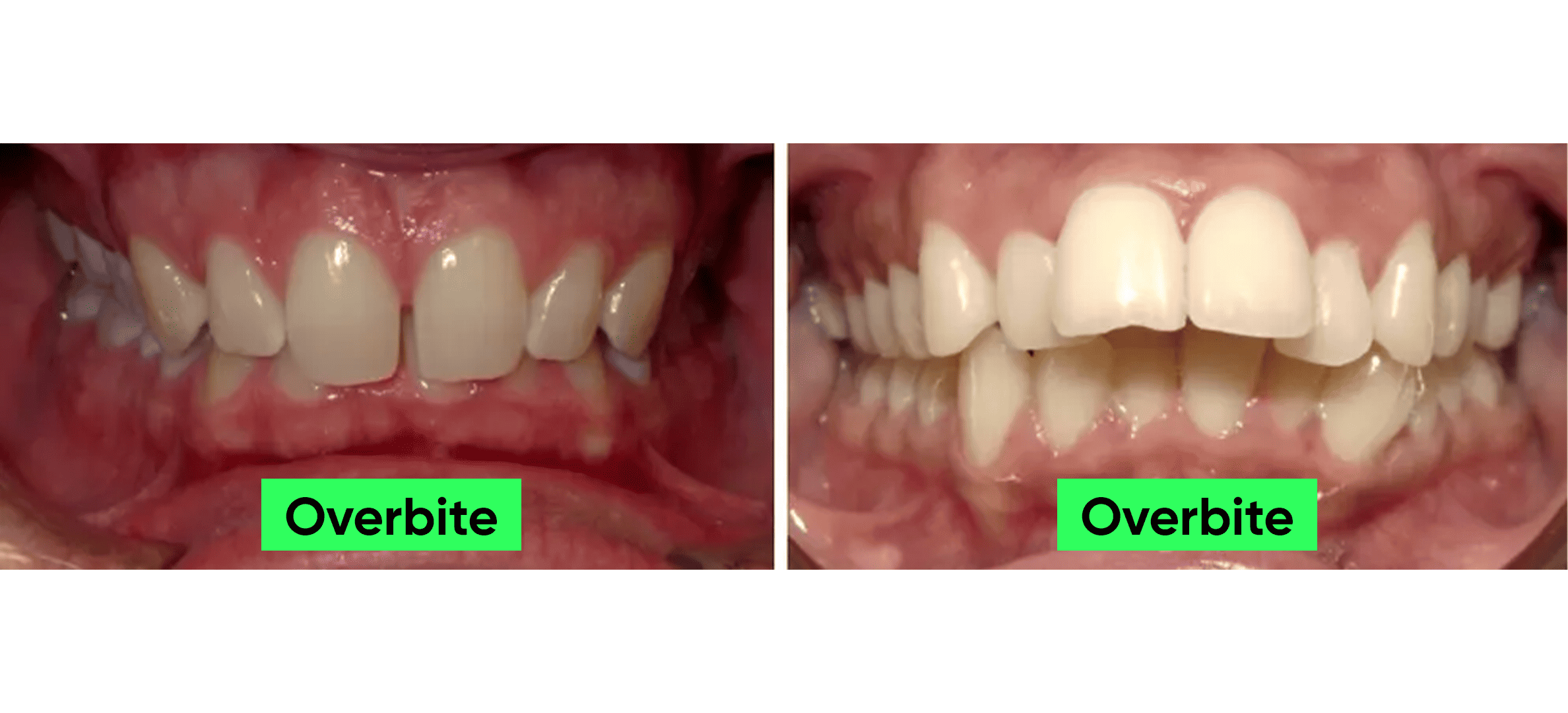
Although often used interchangeably, overbite and overjet are two different terms. Overbite refers to the vertical overlap of the front upper and lower teeth, while overjet is the horizontal overlap or the distance between the teeth.
Now, it is important to understand that a certain degree of overbite is normal – meaning, the front teeth are supposed to go over the bottom teeth to some extent. When you bite down or close your jaws normally, your teeth should not meet in the middle. Instead, your upper teeth should overlap over the lower jaw slightly.
However, sometimes this overlap is more excessive and may cause an aesthetic issue or pose different health problems. This is what is most commonly referred to as an overbite.
Causes of Overbite
An overbite can be caused by a number of factors – some of them genetic, some developmental, or environmental.
Typically, dentists believe that genetics is the main cause of an overbite. So, people who have parents with overbites can blame their genetic predisposition for their underdeveloped lower jaw.
Orthotropists, on the other hand, lean more toward the belief that malocclusions result from environmental and developmental factors. For instance, an overbite, an underbite, or a crossbite may result from the overuse of pacifiers and dummies early on in life. They may also occur because of thumb-sucking, nail-biting, and similar bad habits.
People with all or some of these habits have one thing in common – poor tongue posture.
Poor tongue and mouth position are two of the main culprits for creating or making an overbite worse. A wrong tongue position is every other except when the tongue is resting on the roof of the mouth.
When placed like this, the mouth is closed and the jaws interlocked without the ability for mouth breathing. Interlocked jaws prevent abnormal growth of one jaw or the other.
On the other hand, when the tongue sits low in the mouth and out mouth is open for extended periods, this causes the lower jaw to retract backward and the upper jaw to grow forward – creating an overbite.
Thumb-sucking and pacifier use – commonly known as nonnutritive sucking behaviors (NNSB) – are instigators of poor tongue posture. A study published in 2016 found that a prolonged duration of NNSB increases the risk of developing an overbite.
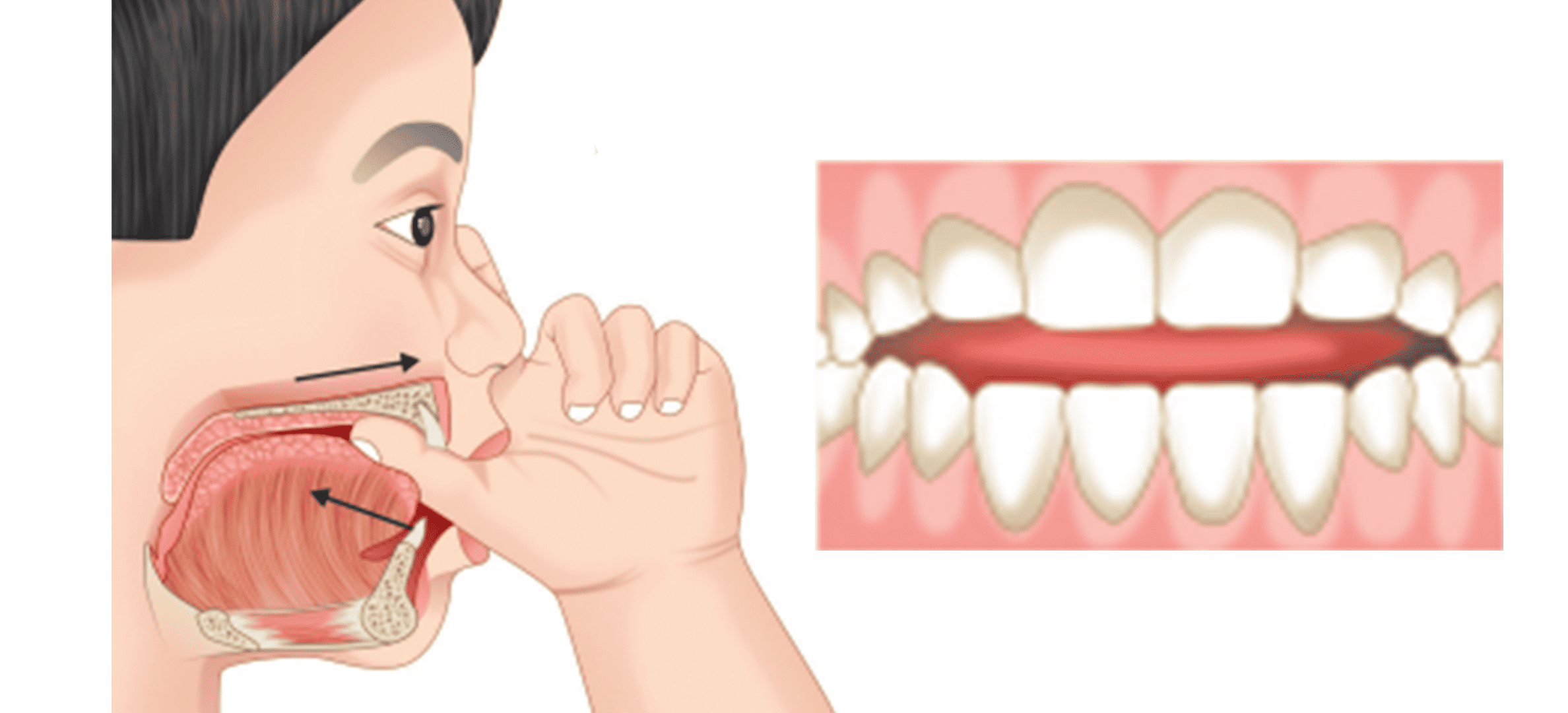
Some other factors that can cause or contribute to the development of an overbite include:
- Teeth grinding or bruxism (check out our blog post on mewing with bruxism for more information)
- TMJ disorders
- Mouth breathing.
Should You be Mewing With an Overbite?
Recently, a new non-invasive correction method called mewing entered the scene.
Mewing is a DIY practice of proper tongue posture that promotes good oral health and proper mouth and jaw development in children and adults. It was first introduced as a concept by the British orthodontist Dr. John Mew and further developed by his son Dr. Mike Mew as an alternative treatment plan for various oral conditions.
There’s been an ongoing debate in the orthodontic world about the effects of mewing and whether mewing with an overbite is a good idea. Some people claim to have achieved amazing results, and some claim that it worsened their overbite.
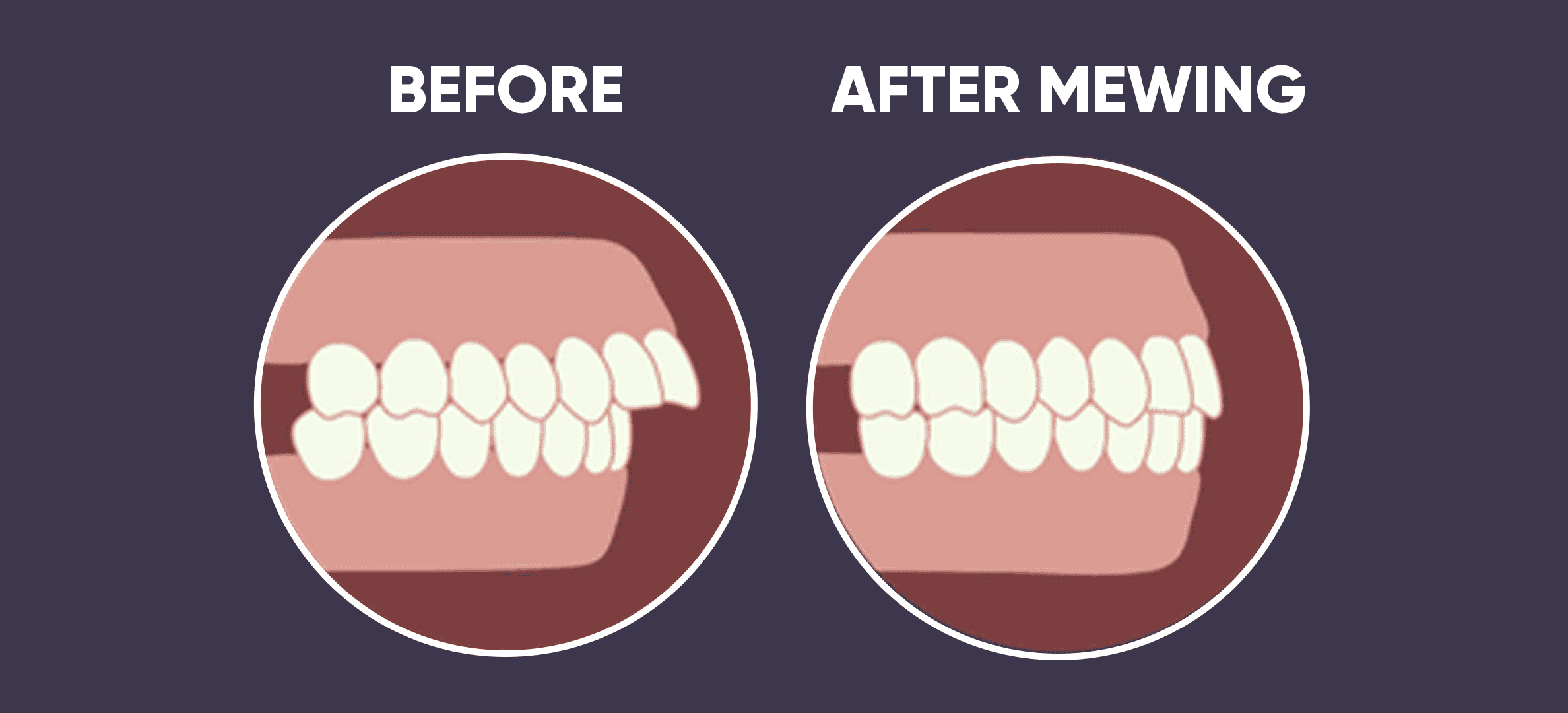
The truth is – there is no scientific evidence to support either of these claims.
So, we are not saying that you should, by all means, start to mew to fix your overbite. But we are also not saying that mewing will make it worse. Of course, this is your decision to make – we are just here to provide you with as much information as we can.
But before you start mewing with an overbite, it’s also wise to consult a medical professional. They can help ensure you’re doing it correctly and can introduce some additional treatments if needed.
How to Get Rid of an Overbite With Mewing
Depending on the severity of their overbite, different people may experience different results. A slight overbite would be easier to treat, and results would be visible much faster. On the other hand, an excessive overbite might require additional orthodontic treatment.
In the beginning, your mewing practice may feel a bit uneasy, but it should improve and become second nature with time.
Be careful not to put too much pressure on your jaws or palate. The entire tongue should rest lightly against the roof of the mouth, and the tip should be slightly behind the front teeth of the upper jaw while the back teeth touch gently.
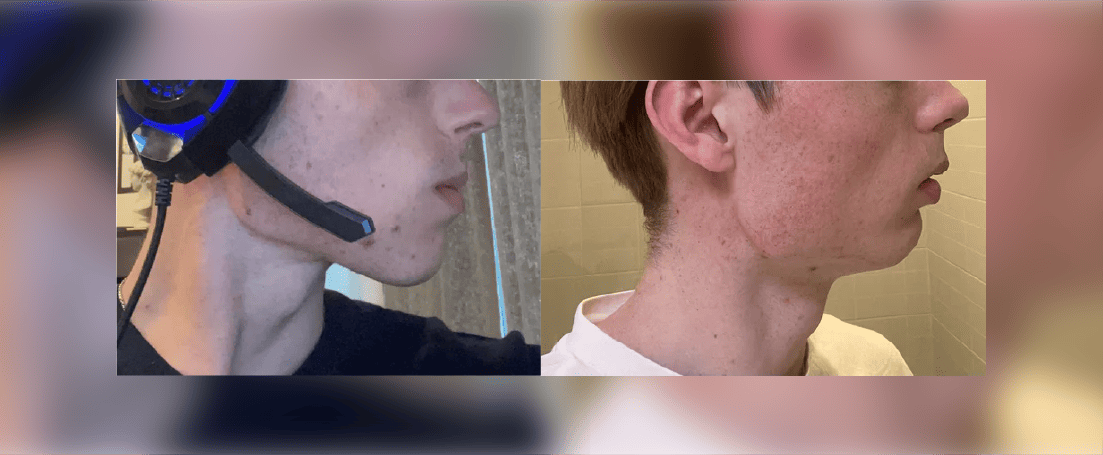

Learn to Mew Properly Using the MewingCoach App
Lucky for you, we offer a solution for almost every problem you might encounter on your mewing journey. If you’re in need of some extra guidance, just visit our website to discover how to start mewing and download the MewingCoach app to help you:
- Stay informed with sound educational content to reach your desired appearance
- Track and evaluate your progress
- Watch informative videos explaining and illustrating proper mewing techniques
- Discover a number of different mewing exercises to help you improve target areas
- Get daily reminders to make mewing a habit.
Do yourself a favor and join the countless people who have transformed their facial structure and improved their appearance with MewingCoach!
Advantages of Mewing With an Overbite
Because the tongue is pressed against the upper palate during mewing practice, the maxilla expands. However, some people report that the exercise helped their lower jaw and top jaw and teeth meet, thus solving their overbite problem.
Things to Watch Out For
Because mewing correctly means resting the tongue on the roof of the mouth, it can bring the maxilla forward and further extend the top jaw over the bottom jaw. Mewing incorrectly can also cause damage if, for example, you push your tongue against the top teeth, causing the overbite to become even more severe.
Mewing Results: Before and After Overbite
Are you still asking yourself: does mewing actually work?
Take a look at some of these mewing before and after overbite transformations people have experienced!
As you can see, mewing not only helps with overbites but many other facial and dental irregularities – you can see in many of the photos that mewing potentially straightens teeth too!
How Long Does It Take to Get Rid of an Overbite While Mewing
Although mewing with an overbite has shown some outstanding results, it’s definitely not a magical cure. In order for it to be successful, you’ll need to put in a lot of effort and be consistent.
It typically takes somewhere between 6 to 24 months to start seeing some changes. This, of course, depends on your age, persistence, and the severity of the condition. Children and young adults experience changes more quickly, while older people may need more time.
How to Prevent Overbite Recurrence
Assuming you’ve started mewing and managed to correct your overbite, you can’t afford to slack off now. You will need to do some hard mewing to keep your progress.
Try to keep your mouth closed with your tongue resting against your palate whenever you’re not eating, drinking, or talking.
If you manage to internalize this habit and subconsciously incorporate it into your life, you’ll be able to mew even in your sleep! This will help your overbite problem and reduce the risk of developing sleep apnea and other sleep-related issues.
Other Overbite Treatments
People with a more excessive overbite may require other dental treatment, such as wearing braces or other devices and procedures designed to lengthen the mandible.
Let’s check out the top overbite treatments that don’t involve mewing:
The Traditional Orthodontic Approach
Because most orthodontists believe that genetic factors cause overbites, they typically wait until a child turns 12 or 13 years old – when their teeth are fully grown – to begin treatment in order to fix an overbite. You could spend this valuable time on corrective and preventative treatments like good mewing practice.
The treatment involves braces that pull the upper front teeth backward instead of pushing the lower teeth or jaw forward. Can mewing replace braces? If done the right way and early on, mewing can eliminate the need for braces later in life.
Mandibular Advancement Devices
Sometimes a mandibular advancement device (MAD) is used to push the lower jaw forward. This treatment aims to bring the bottom jaw forward; however, it is known to cause pain and discomfort initially.
There are a lot of mandibular advancement devices out there – you can buy some of them over the counter. Of course, they all work the same way – they pull the maxilla and the upper teeth backward while pushing the lower teeth and jaw forward.
You can only wear these devices at night while you sleep; they can be pretty uncomfortable.
Mandibular Advancement Surgery
Some people may turn to mandibular advancement surgery as a last resort to correct their overbite problem. This type of facial skeletal surgery is more commonly done on older people who are less likely to see significant results from a corrective treatment such as mewing or mandibular advancement devices.
Similarly to the MADs, the mandibular advancement surgery aims to push the mandible forward in order to help the lower teeth meet the top teeth and correct the overbite.
This procedure can also help with other conditions, such as sleep apnea and snoring. It can also relieve pain and solve chewing problems.
Final Thoughts
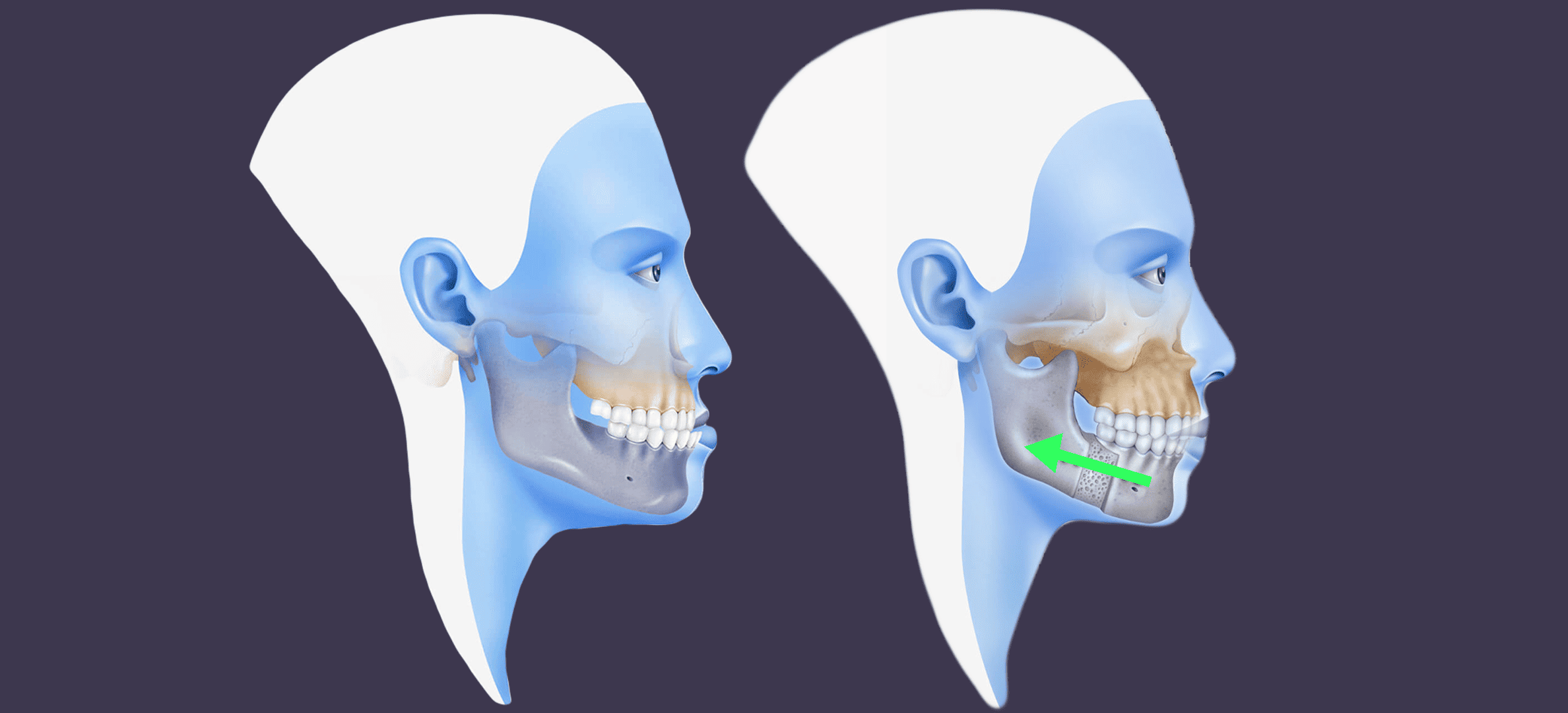
Mewing focuses on proper tongue posture, which promotes good teeth and jaw alignment. So if you have poor mouth or jaw posture or crooked teeth and want to improve your overall facial structure, correct mewing can help.
Mewing will give you a more pleasant look and help you sleep better, maintain good oral health, and prevent tooth decay. And let’s not even begin describing the aesthetic benefits!
Note that if you have a more severe form of an overbite, the best thing to do would be to consult your dentist or orthodontist to advise you on the best course of action.



